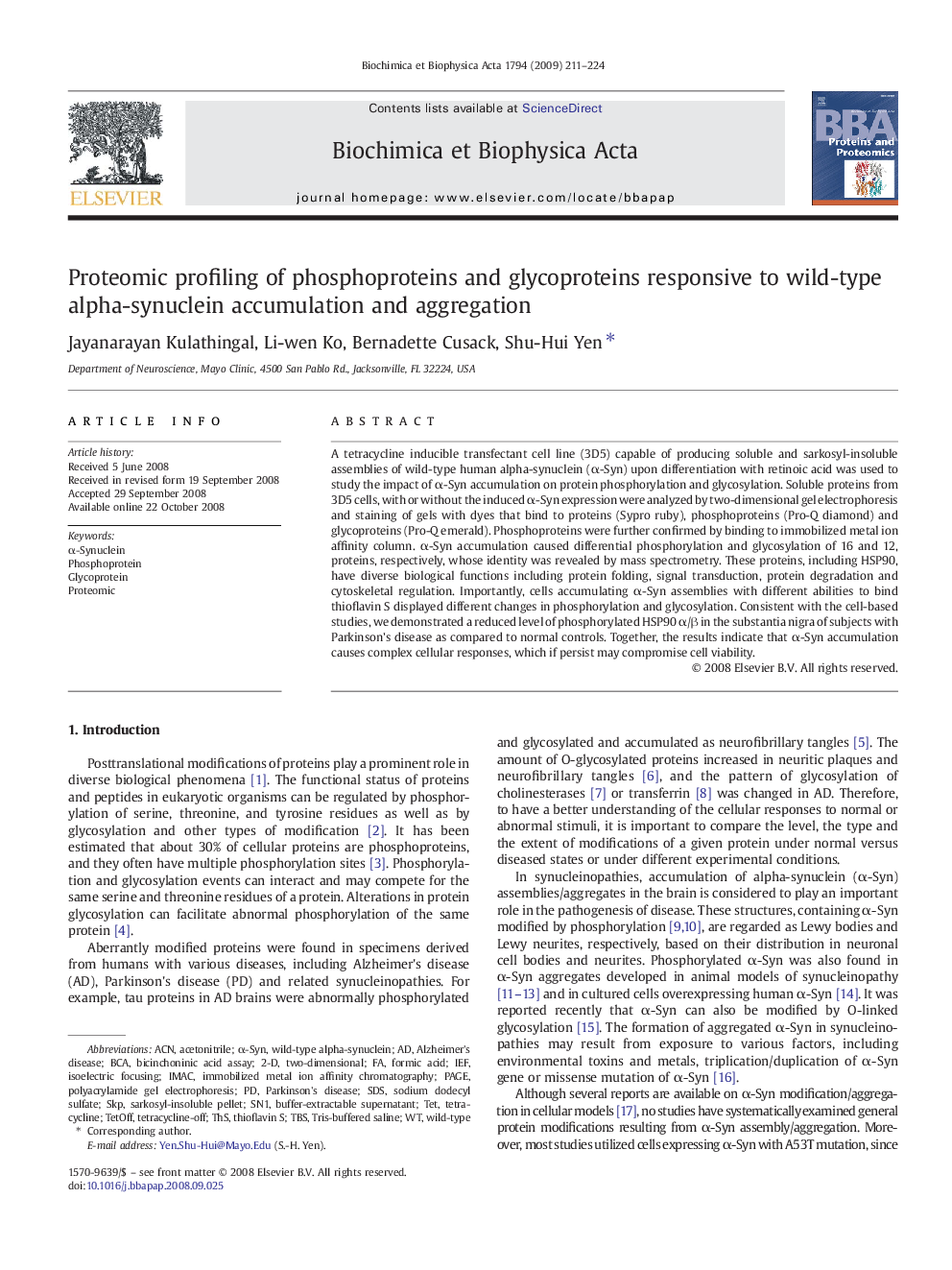| Article ID | Journal | Published Year | Pages | File Type |
|---|---|---|---|---|
| 10537072 | Biochimica et Biophysica Acta (BBA) - Proteins and Proteomics | 2009 | 14 Pages |
Abstract
A tetracycline inducible transfectant cell line (3D5) capable of producing soluble and sarkosyl-insoluble assemblies of wild-type human alpha-synuclein (α-Syn) upon differentiation with retinoic acid was used to study the impact of α-Syn accumulation on protein phosphorylation and glycosylation. Soluble proteins from 3D5 cells, with or without the induced α-Syn expression were analyzed by two-dimensional gel electrophoresis and staining of gels with dyes that bind to proteins (Sypro ruby), phosphoproteins (Pro-Q diamond) and glycoproteins (Pro-Q emerald). Phosphoproteins were further confirmed by binding to immobilized metal ion affinity column. α-Syn accumulation caused differential phosphorylation and glycosylation of 16 and 12, proteins, respectively, whose identity was revealed by mass spectrometry. These proteins, including HSP90, have diverse biological functions including protein folding, signal transduction, protein degradation and cytoskeletal regulation. Importantly, cells accumulating α-Syn assemblies with different abilities to bind thioflavin S displayed different changes in phosphorylation and glycosylation. Consistent with the cell-based studies, we demonstrated a reduced level of phosphorylated HSP90 α/β in the substantia nigra of subjects with Parkinson's disease as compared to normal controls. Together, the results indicate that α-Syn accumulation causes complex cellular responses, which if persist may compromise cell viability.
Keywords
SDSTETIEFPAGEBCAα-SynIMACTBSACNSKP2-DSn1THsα-synucleinbicinchoninic acid assayAcetonitrileFormic acidpolyacrylamide gel electrophoresisAlzheimer's diseaseParkinson's diseaseTetracyclineTris-buffered salineisoelectric focusingThioflavin Stwo-dimensionalsodium dodecyl sulfatePhosphoproteinwild-typeProteomicimmobilized metal ion affinity chromatographyGlycoprotein
Related Topics
Physical Sciences and Engineering
Chemistry
Analytical Chemistry
Authors
Jayanarayan Kulathingal, Li-wen Ko, Bernadette Cusack, Shu-Hui Yen,
